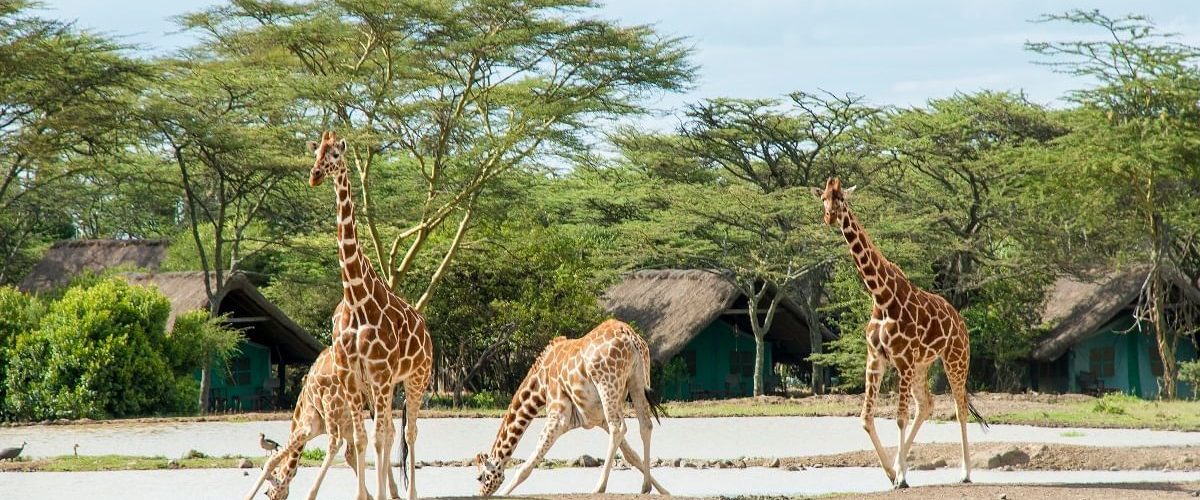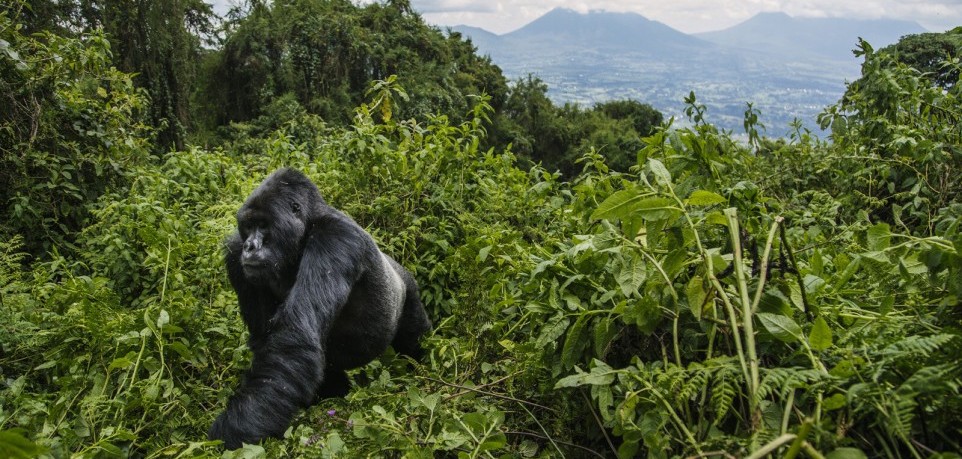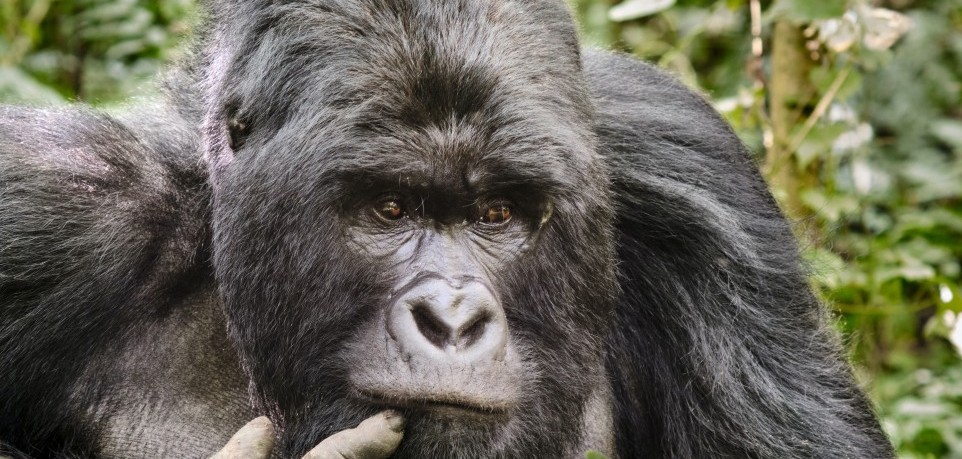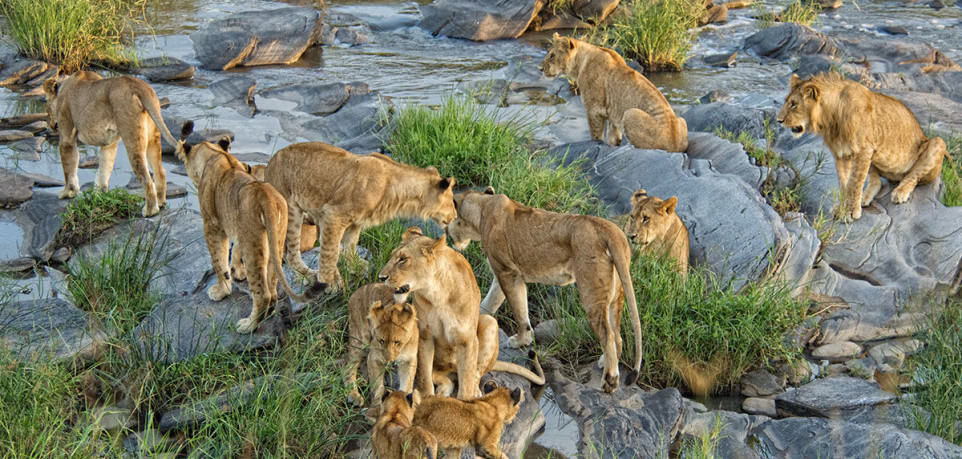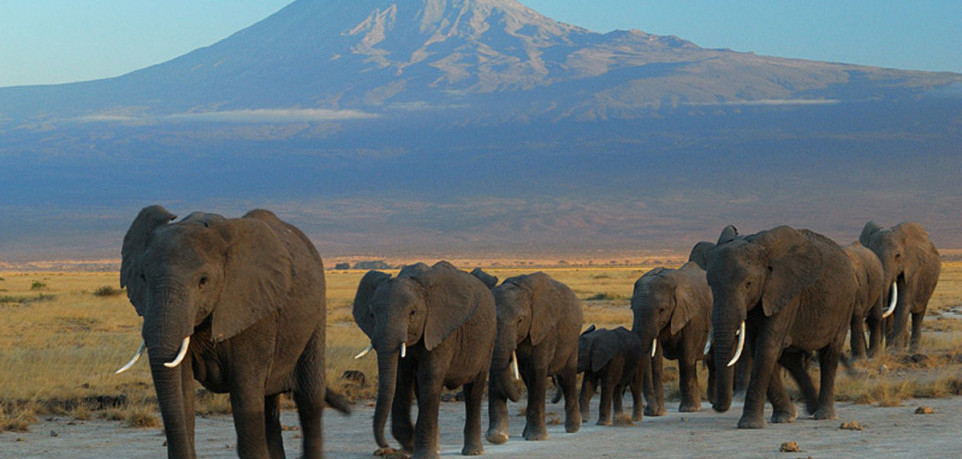Located between Mount Kenya foothills and Aberdare Mountains is the spectacular Ol Pejeta Conservancy. Ol Pejeta is best known for its large rhino population and is home to the Northern white rhinos, a species that still exists. This conservancy area is found in Laikipia District, Central Kenya. It was established in 1988 as a cattle farm before becoming a Wildlife Conservation Area covering about 400 sq. km.
Today, Ol Pejeta Wildlife Conservancy features as a valuable ecosystem, home to abundant endangered species. On Kenya safaris, there is no better place to see rhinos than Ol Pejeta Conservancy.
The Wildlife Species
At Ol Pejeta, expect to encounter a diversity of wildlife. This conservation area features among the top destinations in Kenya for wildlife concentration and diversity. The conservancy harbours wildlife such as cape buffaloes, leopards, rhinos (both black and northern white rhinos exist here), elephants, lions, and other mammals. The additional animals that reside in Ol Pejeta Wildlife Conservancy include zebras, Oryx, hippos, African wild dogs, Grant’s and Thompson’s gazelles, giraffes, and cheetahs.
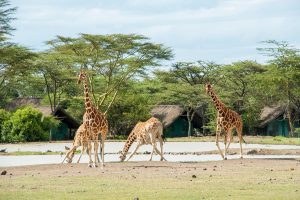
Primates in Ol Pejeta include chimpanzees, and the chimp sanctuary was founded by the Jane Goodall Institute, specifically to protect several rescued chimpanzees. The refuge plays a significant role in saving orphaned chimpanzees. The conservancy area holds orphaned or abandoned chimpanzees. These live together with DeBrazza’s monkeys, baboons, and others.
Ol Pejeta’s bird species
About 500 bird species live in Ol Pejeta alone, making it one of the special birding spots. At Ol Pejeta, expect to see birds such as vulturine guineafowl, Kori bustards, martial eagles, superb starlings, amethyst sunbirds, cinnamon-chested bee-eaters, and canaries. This sanctuary also protects birds such as knob-billed ducks, yellow-billed storks, red-billed firefinch, long claws, Egyptian geese, helmeted guineafowl, and bronze manikin.
The main highlights of the Ol Pejeta Conservancy Tour
Visit the Sweetwaters
A safari in Ol Pejeta isn’t complete without a tour of the Sweetwaters. At the Sweetwaters Chimpanzee Sanctuary, expect to explore unique species that no Kenya safari can reward you with. About 40 abandoned and rescued chimpanzees live in this sanctuary alone. The refuge is one of the establishments of the Jane Goodall Institute and the Kenya Wildlife Service. You can observe the chimpanzees as they display their daily behaviours and have the chance to troll along the set trails.
Explore the endangered species in their enclosure.
Ol Pejeta is an excellent spot to explore the black and the Northern white rhinos. There is an enclosure where you can enjoy a guided game drive. As you navigate through the site on a game drive, expect to see not only rhinos, but also other unique animals, including the Jackson’s Hartebeest, Grevy’s zebras, Oryx, and more.
Horseback tours
Guided horseback tours offer an exceptional alternative for tourists to experience most of Ol Pejeta. Horseback rides provide an immersive experience of the sanctuary and take about 2 hours to explore the white rhino enclosure and the sanctuary’s plains.
Cycling tours
Cycling is one of the unique highlights awaiting you on a safari in the Ol Pejeta Conservancy. Enjoy the entire day as you navigate through the extensive 42 km cycling route. The long-day cycling excursion can include an en-route lunch. You may even consider taking a light rock hike.
Why visit Kenya’s Ol Pejeta Conservancy?
Ol Pejeta remains an exceptional destination for rhino sightings in Kenya. Visitors can also enjoy a variety of experiences, including guided game drives, horseback riding, mountain biking, cycling, lion tracking, community tours, walking tours, and running with rangers.
Best season/time to visit Kenya’s Ol Pejeta
Ol Pejeta Conservancy offers an all-year-round wildlife safari experience. But first, you need to understand the different seasons before embarking on a safari. The low or off-season, also known as the green season, is usually characterised by long rains. This occurs from April to June, and due to heavy rains, access to the sanctuary can be a little challenging.
The high season, from January to March, sees hot temperatures. But given that short rains just ended in December, travelling to Ol Pejeta during the high peak months allows you to appreciate the lush green vegetation and the diverse wildlife that come to forage. Spotting wildlife in the sanctuary during the high season is often easier because of the short grass.
From November to December, the sanctuary records short rains. There is some disruption, and visits to Ol Pejeta have decreased.
The peak months from July to October also mark the busiest season. Most tourists come to explore the sanctuary and its wonders.
Where to stay (Ol Pejeta’s Camps & Lodges)
The different accommodation options for an overnight stay on an Ol Pejeta Conservancy tour include Maisha Sweetwaters Camp, Ol Pejeta Safari Cottages, Sweetwaters Serena Camp, Mutara Camp, Ol Pejeta Bush Camp, Pelican House, and Tambarare Camp.
How to reach Ol Pejeta Conservancy
Situated in Laikipia County, Ol Pejeta Conservancy is accessible 200km from Nairobi city. This translates to approximately 3.5 to 4 hours’ drive, but this may depend on the nature of the road. Visitors can drive along the A2 highway from Nairobi via the Thika-Karatina-Nanyuki route and connect to the conservancy.
By air –take a domestic flight to Nanyuki Airstrip, which is a 45-minute drive from Ol Pejeta. Visitors can take off from Wilson Airport for Nanyuki in just 35-45 minutes. You can also fly up to Kamok Airstrip in a private flight.
Is Kenya’s Ol Pejeta worth visiting?
Ol Pejeta Wildlife Conservancy is a must-visit if you are looking for a destination to find all the Big Five game on a Kenya safari. This conservancy offers incredible opportunities to interact with rhinos, birds, and other wildlife. The most memorable of the Ol Pejeta wildlife tour is the night safari. The special thing about it all is that it is home to the 2 Northern white rhino subspecies.
Ol Pejeta Vs Lewa Conservancy
Ol Pejeta offers relatively flexible safaris, including self-drive tours and night safaris. At Ol Pejeta, you can enjoy a view of wildlife at close range more than at Lewa. At Lewa, visitors want more exclusive guided game safaris with a more intimate wilderness experience.
Ol Pejeta Entrance Fees
Daily entrance fees to Ol Pejeta Wildlife Conservancy vary by visitor category. Non-residents pay USD 110 per adult, USD 55 per child, and USD 32 per student. East African residents (adults) pay KSH 3,500; children, KSH 1,750; and students, KSH 500.
The East African Citizens pay KSH 2,000, children pay KSH 1,000, and the students pay KSH 500. The safari vehicle entry fees to Ol Pejeta are KSH 1,000 for the 6pax seater, KSH 5,000 for 7 to 14 seater vehicles, and KSH 12,000 for 15+ seater vehicles.
What to take on the Ol Pejeta Conservancy tour
Consider packing carefully for your Ol Pejeta tour, including essentials such as a camera, a pair of binoculars, wet wipes, sandwich bags, sunscreen, plug adaptors, insect repellent, a bottle of drinking water, and waterproof walking boots. Other essential items to carry include long trousers, safari hat, shorts, long-sleeved shirts, and others.
Ol Pejeta Conservancy should be your priority destination, especially if your interest is to explore the Big Five game on a Kenyan safari. Talk to our experts to plan and book a wildlife tour to Ol Pejeta and other destinations in Magical Kenya.



